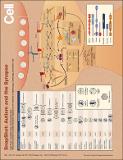| dc.contributor.author | Peca, Joao | |
| dc.contributor.author | Ting, Jonathan | |
| dc.contributor.author | Feng, Guoping | |
| dc.date.accessioned | 2015-03-04T19:36:43Z | |
| dc.date.available | 2015-03-04T19:36:43Z | |
| dc.date.issued | 2011-10 | |
| dc.identifier.issn | 00928674 | |
| dc.identifier.issn | 1097-4172 | |
| dc.identifier.uri | http://hdl.handle.net/1721.1/95815 | |
| dc.description.abstract | Autism and autism spectrum disorders (ASDs) are neurodevelopmental disorders diagnosed based on a triad of criteria: deficits in language and communication; impaired or abnormal social interactions; and restricted interests or repetitive behaviors. The high heritability of ASDs—up to 90% in monozygotic twins—when taken in conjunction with the prominence of ASDs in genetic syndromes (e.g., tuberous sclerosis complex [TSC], fragile X, Angelman, Phelan McDermid) indicates that genetic factors play a key role in the etiology of these disorders. Additionally, recent work has identified several synaptic genes as candidates that may afford susceptibility to ASDs. Findings from human genetic studies and functional neurobiological inquiries are coalescing in a map of the molecular pathways that when disrupted may be responsible for the origination of ASDs. In addition, the accretion of these findings has provided important insights concerning how a relatively broad group of neurodevelopmental disorders, with putative diverse genetic etiologies, may converge upon common proteins found at the synapse. | en_US |
| dc.language.iso | en_US | |
| dc.publisher | Elsevier | en_US |
| dc.relation.isversionof | http://dx.doi.org/10.1016/j.cell.2011.10.015 | en_US |
| dc.rights | Article is made available in accordance with the publisher's policy and may be subject to US copyright law. Please refer to the publisher's site for terms of use. | en_US |
| dc.source | Elsevier | en_US |
| dc.title | SnapShot: Autism and the Synapse | en_US |
| dc.type | Article | en_US |
| dc.identifier.citation | Peça, Joao, Jonathan Ting, and Guoping Feng. “SnapShot: Autism and the Synapse.” Cell 147, no. 3 (October 2011): 706–706.e1. © 2011 Elsevier Inc. | en_US |
| dc.contributor.department | Massachusetts Institute of Technology. Department of Brain and Cognitive Sciences | en_US |
| dc.contributor.department | McGovern Institute for Brain Research at MIT | en_US |
| dc.contributor.mitauthor | Feng, Guoping | en_US |
| dc.contributor.mitauthor | Ting, Jonathan | en_US |
| dc.relation.journal | Cell | en_US |
| dc.eprint.version | Final published version | en_US |
| dc.type.uri | http://purl.org/eprint/type/JournalArticle | en_US |
| eprint.status | http://purl.org/eprint/status/PeerReviewed | en_US |
| dspace.orderedauthors | Peca, Joao; Ting, Jonathan; Feng, Guoping | en_US |
| dc.identifier.orcid | https://orcid.org/0000-0002-8021-277X | |
| mit.license | PUBLISHER_POLICY | en_US |
| mit.metadata.status | Complete | |
